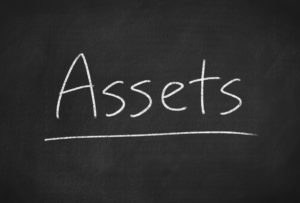 In this article we explain what an asset class is, the types of asset you can invest in and why you should consider investing in a number of different asset classes when investing.
In this article we explain what an asset class is, the types of asset you can invest in and why you should consider investing in a number of different asset classes when investing.
Asset classes explained
An asset class is where a number of financial investment instruments are grouped based on either being governed by the same laws and regulations or the fact that they show similar characteristics in the way they behave in the market.
What are the main types of assets you can invest in?
There are several different asset types and we explain each of the main asset classes below:
Equities / Stocks / Shares
Equities are shares issued by companies that can be bought on exchanges such as the London Stock Exchange and New York Stock Exchange. Investors can choose to buy shares in individual companies however many prefer to invest in equities through a fund, which is a collection of different shares that are pooled together and overseen by an investment manager, often within a tax wrapper such as a pension or ISA.
Bonds / Fixed income / Gilts
Bonds, often referred to as fixed-income investments, are essentially loans to a government or large company. Investors receive a known rate of income in the form of interest (called the coupon) until the loan is repaid (redemption). Loans to private companies are known as 'Corporate Bonds’ and loans to governments are typically referred to as government bonds. Loans to specific governments have their own names, for example, gilts, treasuries and bunds are loans to the governments of the UK, the US and Germany respectively. Like equities, you can invest in a collection of bonds via a fund.
Cash
Cash includes the balances of any Cash ISAs, current accounts, savings accounts and premium bonds, as well as physical currency. Those who are uncomfortable with taking investment risk may choose to hold a higher proportion of cash in their investment portfolio however that is not to say that holding money in cash is completely risk-free. High inflation, combined with low interest returns means your purchasing power can be eroded over time.
Property
Investors can choose to invest in property in many ways. One way is to buy a property either outright or via a buy-to-let mortgage. Many investors prefer to gain exposure to property by investing in direct commercial property funds. These are specific funds that invest in properties such as factories, office units and retail outlets. Alternatively, investors can choose to invest in indirect commercial property funds that invest in the shares of property companies, rather than the properties themselves. It is worth remembering that direct commercial property funds are illiquid assets, meaning the money can be tied up for a considerable period. Indeed, direct commercial property funds also run the risk of being suspended for periods, particularly when a large number of investors wish to exit at the same time.
Commodities
A commodity is a product that can be traded in bulk and is often either a natural resource such as oil or gold or an agricultural product such as wheat, corn or livestock. Other popular commodities include cotton, coffee and sugar. Some can see commodities as a hedge against inflation and rather than buying physical commodities, investors tend to invest in commodity funds.
Are there other types of asset classes?
While we have covered the main asset classes above, many can be subdivided into further categories based on size, geographical region or industry. For example, you could invest in Emerging Market Bonds or Developed Market Equities. All of this information is available via the fund factsheet of any fund and should detail the fund's investment objective, risk level, costs, past performance as well as what it invests in. Below we highlight some different types of asset sub-categories.
Developed Markets
Countries that are widely considered to be the most economically developed and are considered lower risk. These include the UK, North America, Japan, Australia and New Zealand. You therefore can get bond and equity funds that invest in the developed world.
Emerging Markets
Countries considered less economically developed, offer a greater potential for growth but with higher volatility. These include countries such as Brazil, China, India, and Vietnam as well as regions in the Middle East and North Africa. You can invest in bond and equity funds that invest only in shares or bonds from emerging market countries.
Large Cap
Large ‘Blue Chip’ companies are usually worth more than $10bn. Companies include Nvidia, Tesla, Apple, Microsoft and Amazon.
Mid Cap
Mid-size companies that are usually worth between $2-$10bn. Companies include Avis, Duolingo and Abercrombie & Fitch
Small Cap
Smaller companies are usually worth between $300m and $2bn. Companies include lesser-known companies such as America’s car mart, Turtle Beach and Show Carnival.
Industry/Sector
Funds that invest in particular industries. These include industries such as technology, energy, mining and pharmaceuticals, but there are many others.
Why invest in different asset classes?
Asset classes behave differently depending on market conditions and so rather than having all of their eggs in one basket, savvy investors often prefer to diversify their portfolio by investing in many different asset types. It is worth remembering that while it is tempting to identify a single asset that is performing well and invest heavily in that one single asset class, market conditions can change rapidly and an asset class that is outperforming the rest can quickly turn into the worst performing asset class.
Every asset class has its own risk/return profile. Of the three major asset classes, cash is the lowest-risk asset, followed by bonds while equities are the highest-risk asset. The greater the investment risk associated with an asset class the greater the potential rewards and the potential losses. As a guide, the Barclays Equity Gilt Study, which analyses over 100 years of market data, suggest that equities have produced an average annual return of approximately 5% per annum above inflation. The equivalent annual rate for bonds/gilts was almost 2% while the return on cash was just 0.70% per annum above inflation.
Successful investors are those who can diversify their portfolio effectively, achieving a balance of minimising investment risk while maximising returns. The video below explains the importance of diversifying your portfolio.





